Navigating the Atarim Dashboard
Learn the basics of moving through the Atarim Dashboard for better workflow management.
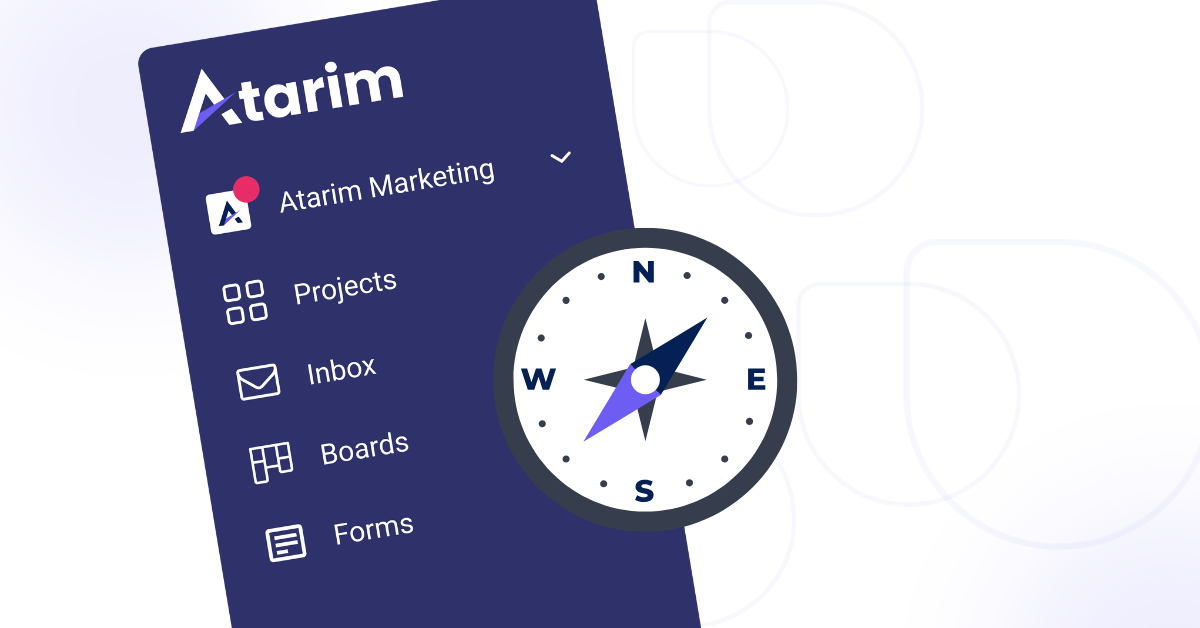
Relevant For
- Project Managers
- Design Leads
- Team Members
Prerequisites
- Access to the Atarim platform with active projects.
Step-by-Step Guide
1. Understanding the Main Menu
The main menu on the left-hand side provides access to your workspaces, notifications, tasks, and settings, etc.
The menu includes:
- Projects: Overview of all your active projects.
- Inbox: Central hub for all task-related messages.
- Boards: Visual task management tools to track project progress.
- Workflows: Automate repetitive processes. Trigger task assignments, status updates, notifications, and more based on specific actions or events.
- People: Manage users, roles, and permissions across your projects. Invite team members or clients and control access levels.
- Analytics: Track performance, activity, and task progress across projects. Gain insights into productivity, workload, and timelines.
- Settings: Customize your account and notifications.

2. Using the Project Overview
The Project Overview section provides a high-level summary of all ongoing projects. For each project, you’ll see key details such as the project’s home page thumbnail, URL, assigned team members, total open tasks, and access to project settings. Need more details? Check out the complete guide on How To Create A Project (1-Click, Chrome Extension, WordPress Plugin)
Instructions:
- Click on the Projects menu to view all your active projects.
- In the Projects Overview, each project is displayed as a block that includes:
- A thumbnail of the project’s home page.
- The project’s URL.
- A list of assigned team members.
- The total number of open tasks.
- A project settings icon to manage project-specific options.
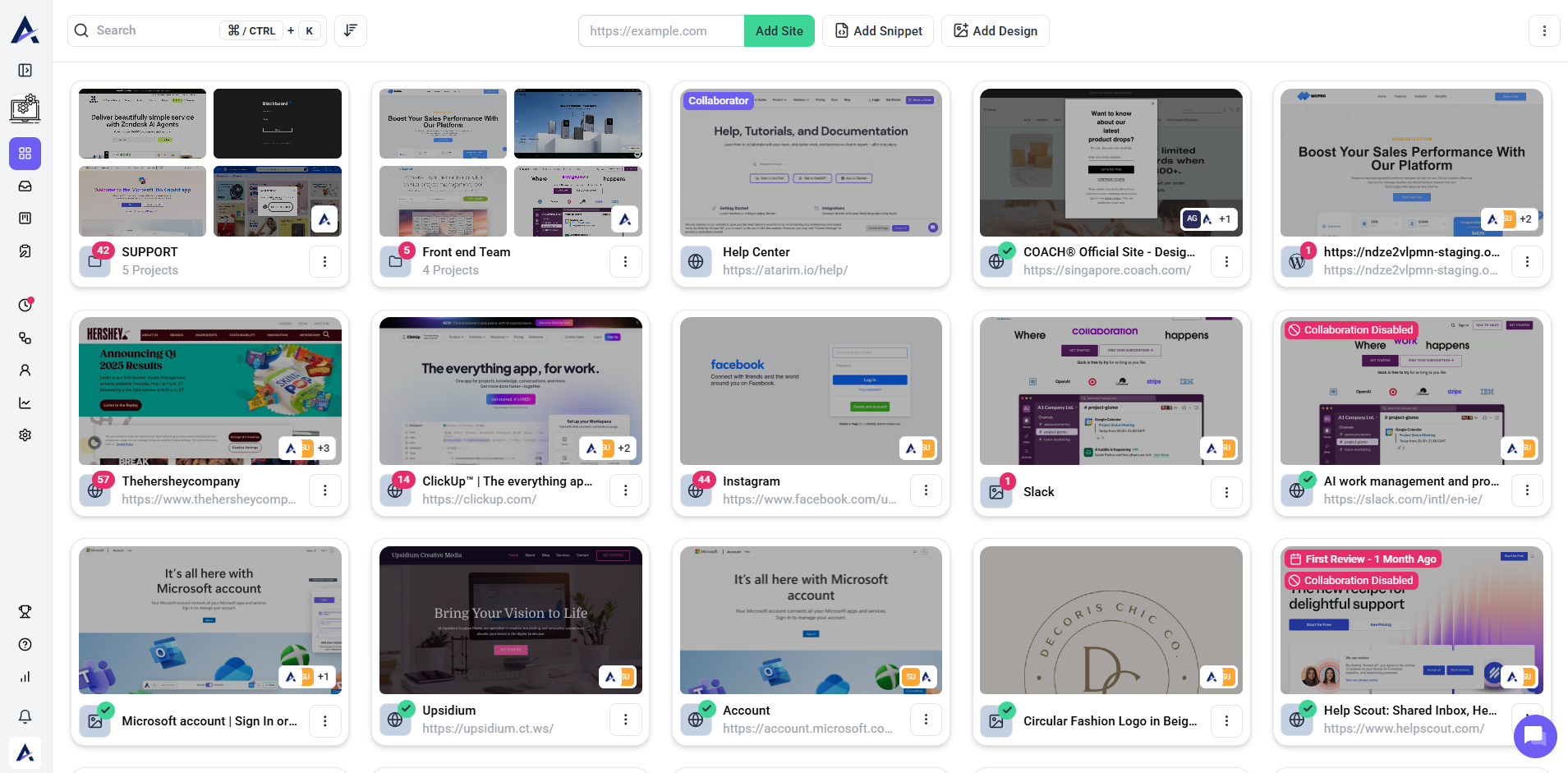
Tip: Use the project settings icon to quickly access configuration options for each project.
3. Accessing the Inbox
The Inbox in Atarim is your central command center for managing feedback and tasks across all projects. It allows for rapid review and processing of tasks, ideal for short, actionable requests like revisions or bug fixes.
Instructions:
- Click Inbox from the main menu.
- Use the project selector to filter by specific project or view all tasks across the workspace.
- Search, sort, and filter tasks using criteria like priority, tags, assignees, or statuses.
- Click on a task to open its detailed view, where you can:
- Respond with comments.
- Change status, priority, or assignees.
- View technical context like browser, screen size, and original screenshots.
- Use the “Go to Task” button to jump directly to the comment on the visual canvas.
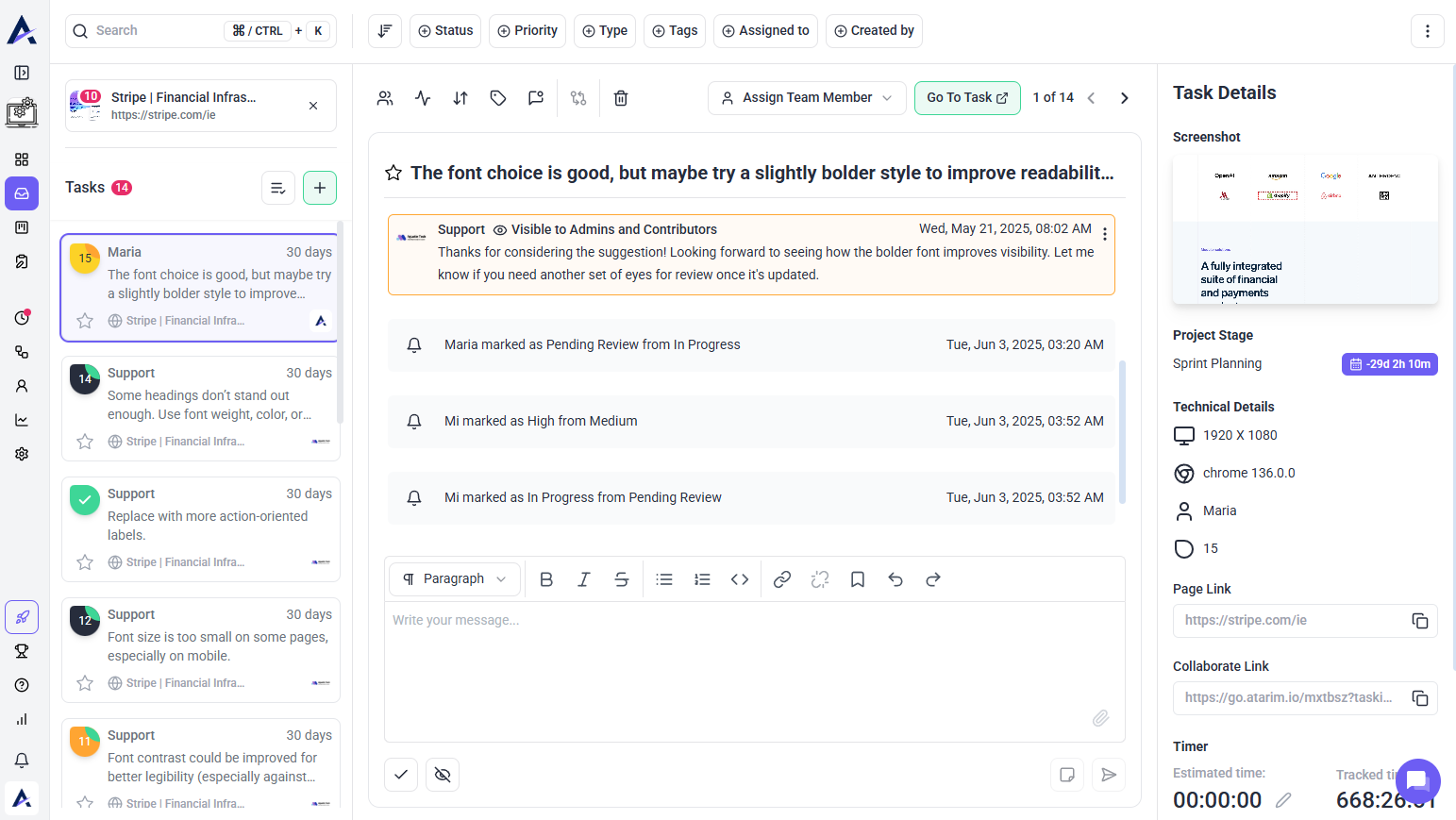
Tip: If you’re managing client support via email, integrate your support@… email and use the Inbox to route, respond to, and organize messages keeping everything under one roof.
4. Using the Boards
Boards provide a Kanban-style visual view of all your tasks, helping project leads and team members track progress across stages like Open, In Progress, Pending Review, and Complete. Discover How To Use Boards Effectively.
Instructions:
- Click Boards from the main menu.
- Choose a project to view its tasks on a visual board.
- Drag and drop tasks between columns to update their status.
- Click on tasks to open full details and update information.
- Switch views by status or priority using the board selector.
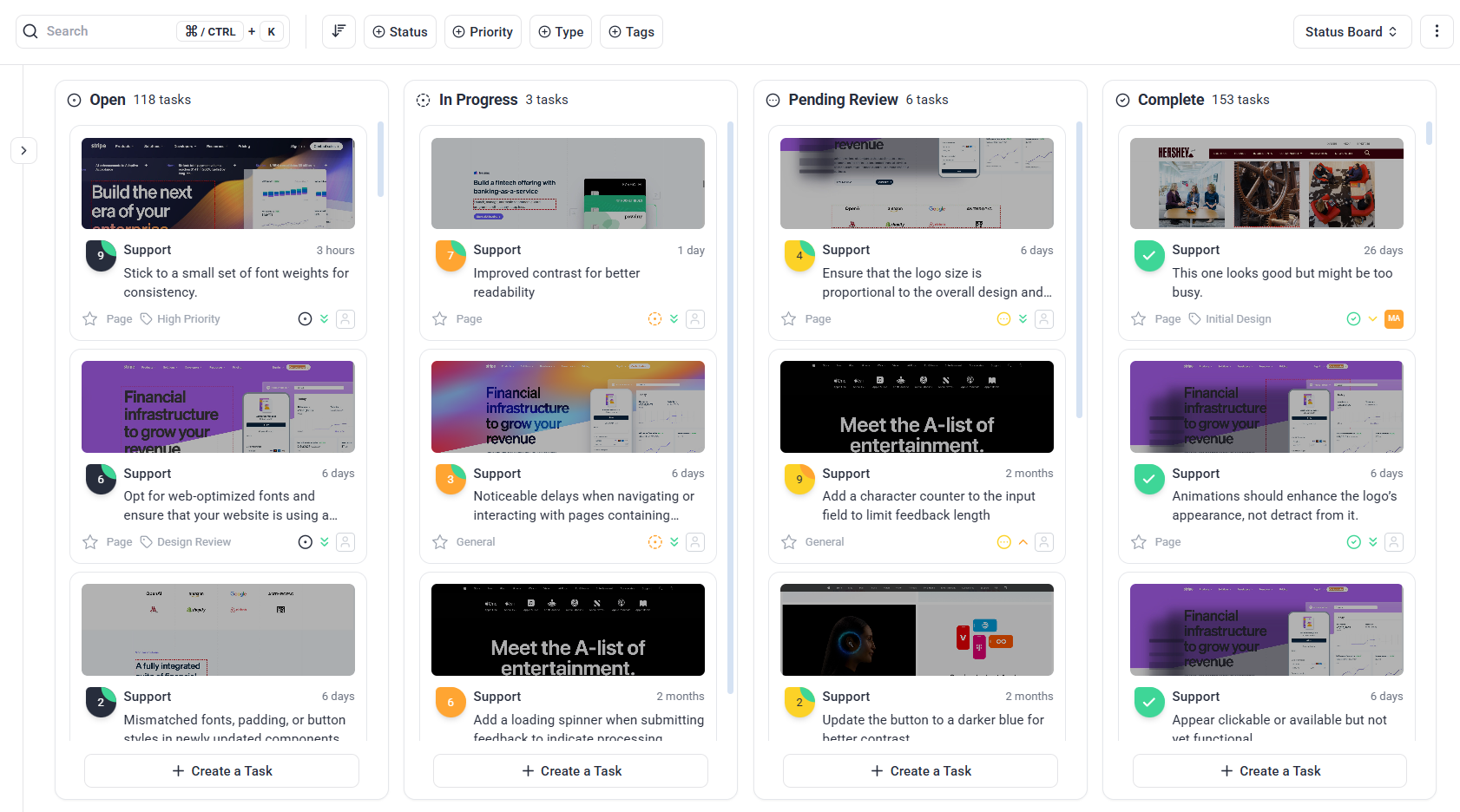
Recommendation: Apply filters to see tasks by specific team members, folders (e.g., clients or departments), or statuses. Ideal for team leads reviewing performance or scoping resource needs.
5. Managing Users via People
The “People” section is where you manage your workspace members, their permissions, and access to projects or folders.
Instructions:
- Go to People from the main menu.
- View all users in your workspace, including their roles and recent activity.
- Assign users to folders or specific projects.
- Customize notification preferences and default behaviors (e.g., auto-assign on new tasks).
- Revoke access or enable two-factor authentication for added security.
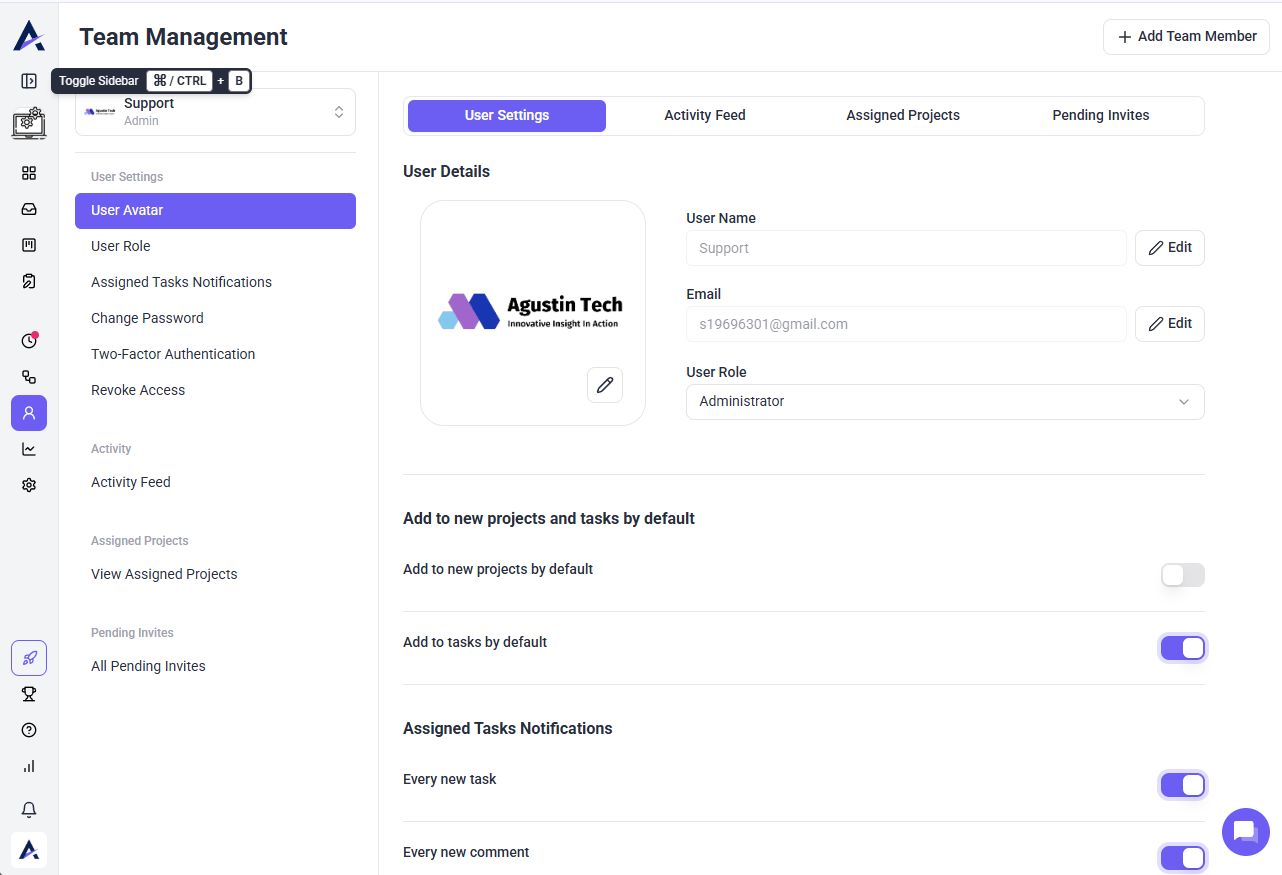
Tip: Use folder-level assignments to simplify team management and streamline access control.
6. Tracking with Analytics
Description:
Analytics gives you actionable insights into your team’s productivity, task load, and performance trends. Discover How to Track Performance with Analytics.
Instructions:
- Click Analytics in the main menu.
- View visual breakdowns of completed tasks, time tracking, project milestones, and user activity.
- Use filters to focus on specific projects or team members.
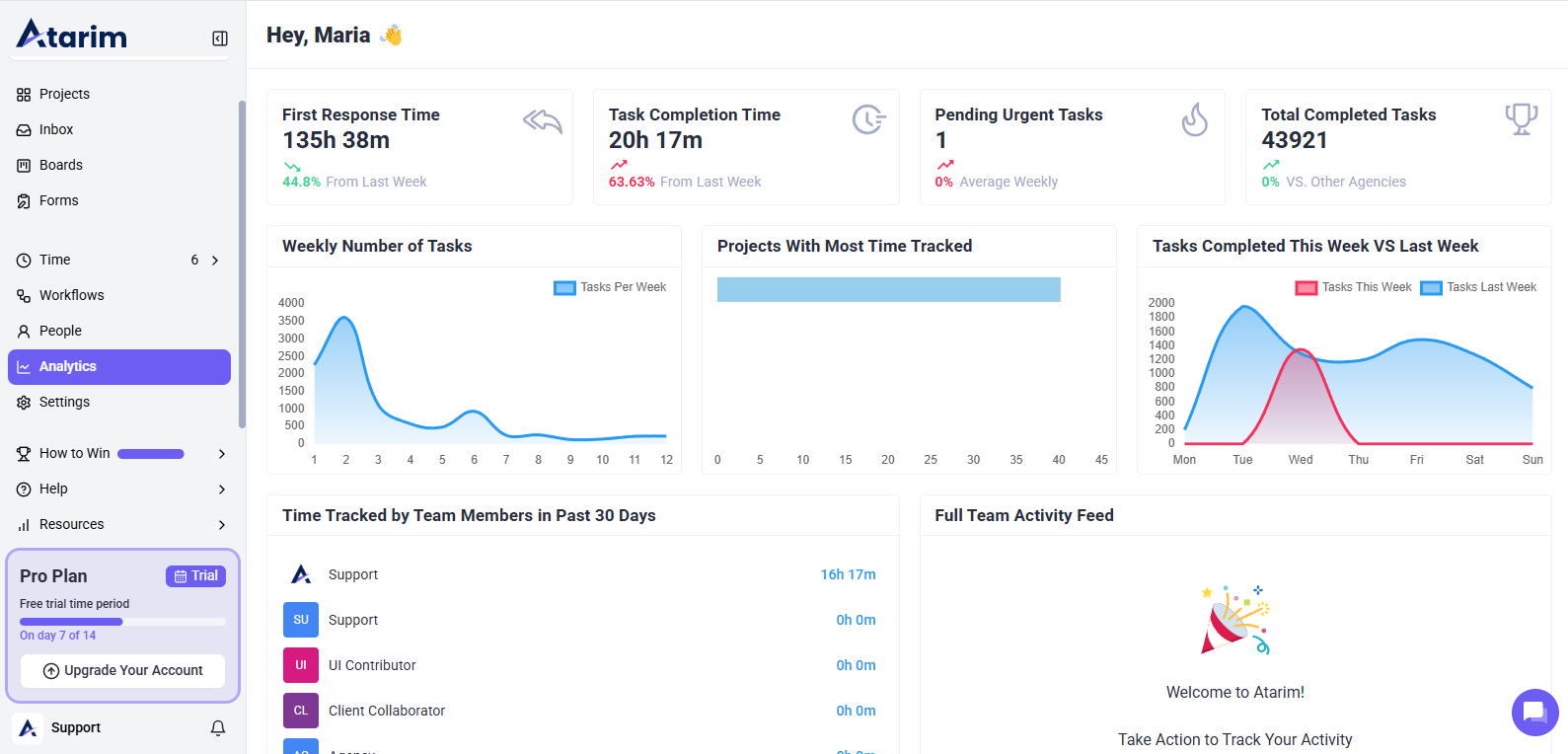
Use Case: Measure project progress, identify top contributors, and uncover areas of delay or scope creep.
7. Managing Notifications
Atarim sends notifications to keep you updated on task progress and feedback. You can access these notifications directly from the dashboard.
Instructions:
- Notifications are located in the bottom left corner of the dashboard menu panel.
- Click the bell icon to view recent notifications about task updates, comments, or client feedback.
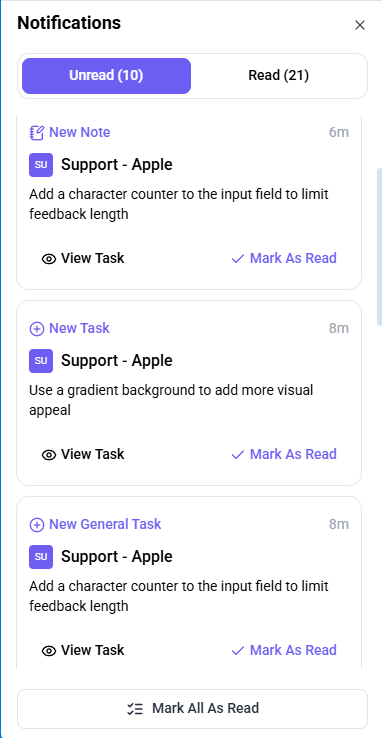
Recommendation: Make sure to assign the appropriate team member to critical tasks or feedback to ensure they stay on top of project updates.
8. Automating with Workflows
Workflows allow you to automate task management, form routing, and notifications across your workspace. Learn more on How to Create a Workflow (Automation)
Instructions:
- Click Workflows from the main menu.
- Choose or Select “Custom Workflow”.
- Define a trigger (e.g., “Form submitted”, “New task created”).
- Add actions such as:
- Notify a team member
- Assign a task
- Move to a specific board column
- Send an email
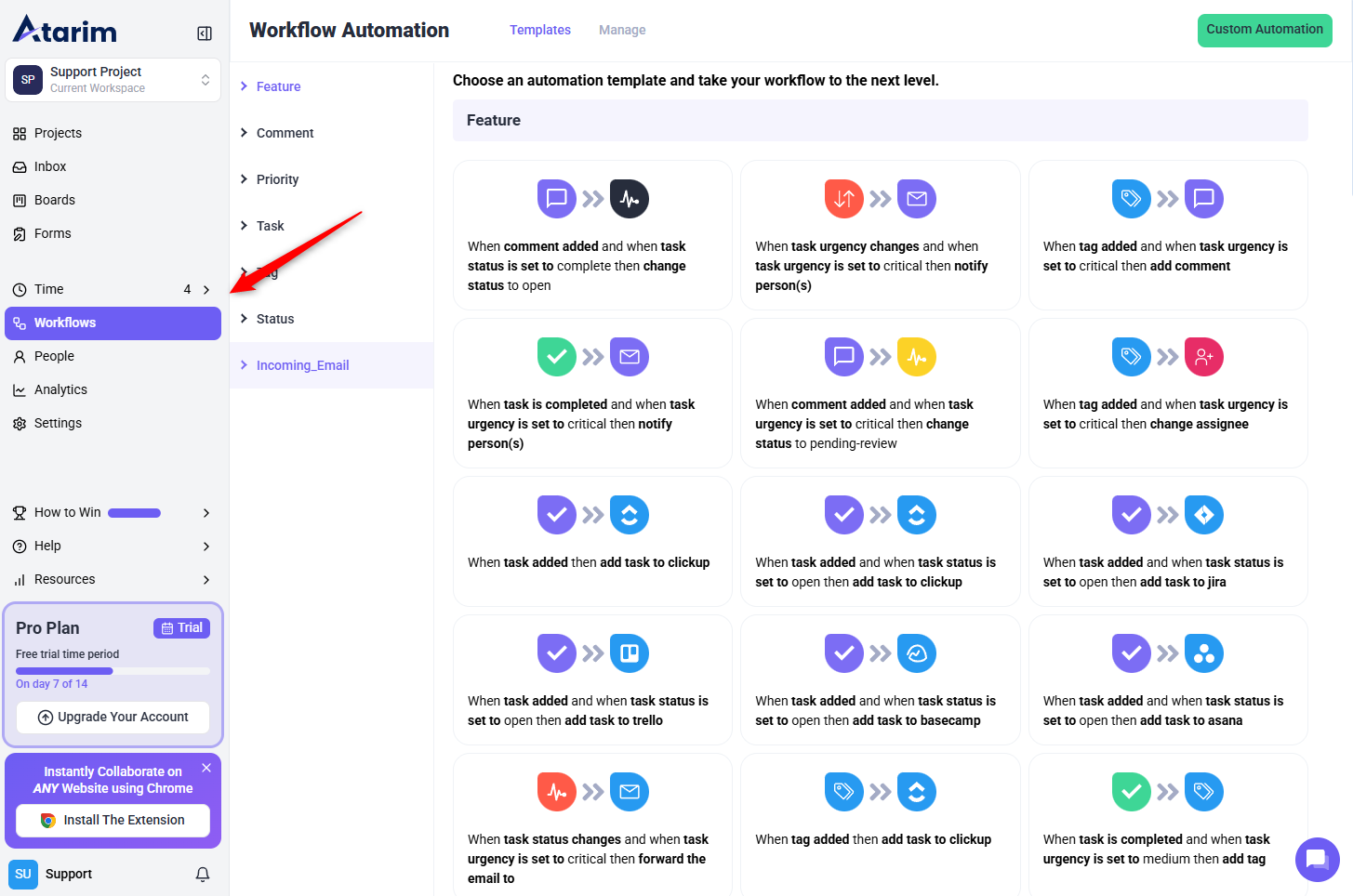
Tip: Use workflows to eliminate manual follow-ups and reduce human error.
FAQs
To update the project thumbnail, click on the project settings icon in the Project Overview section. Then, select Change Project Settings and click the Refresh Image button to update the thumbnail.
In the Project Overview, each project block displays a list of assigned team members. You can also view and manage project team assignments by clicking on the project settings icon.
Tips & Tricks
- Quick Access to Tasks: Bookmark frequently used project links to reduce navigation time.
- Effective Collaboration: Use the Inbox to quickly respond to team or client messages, keeping communication streamlined.
